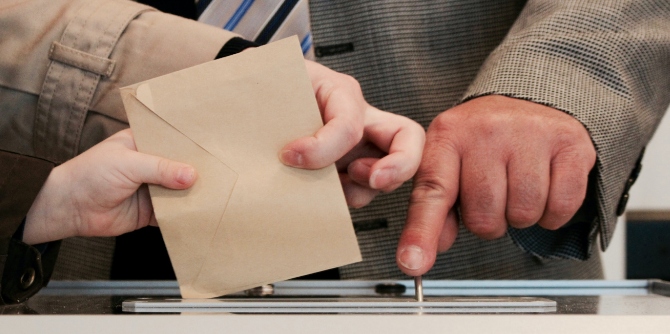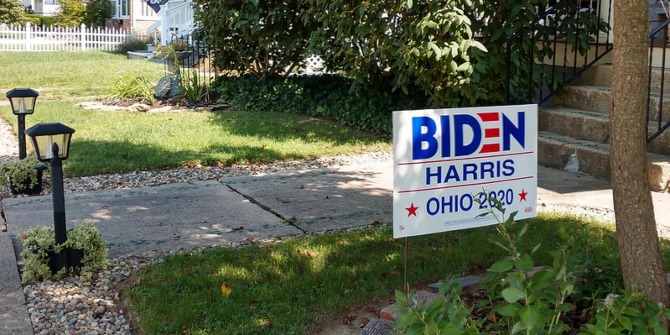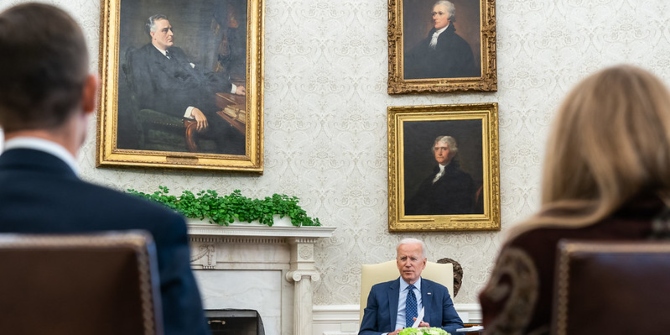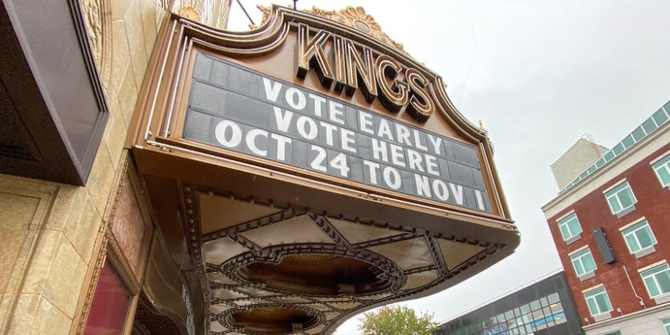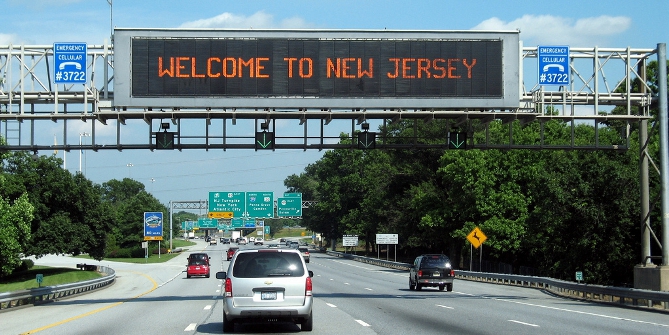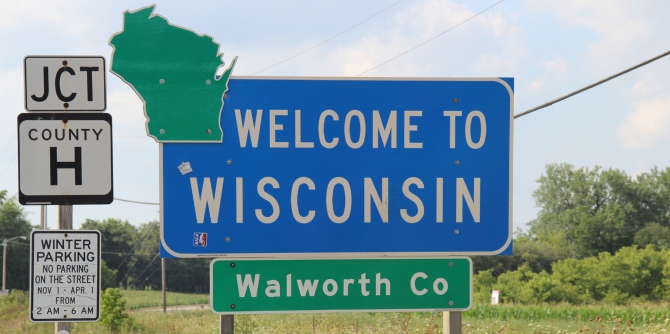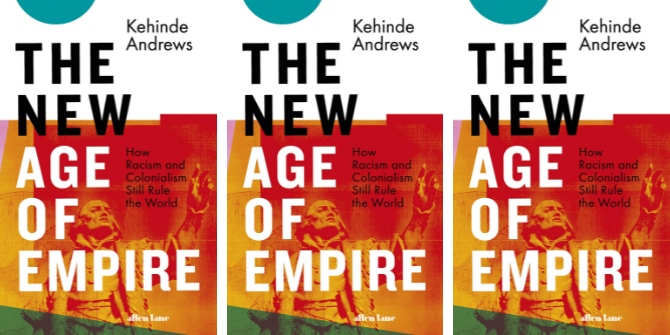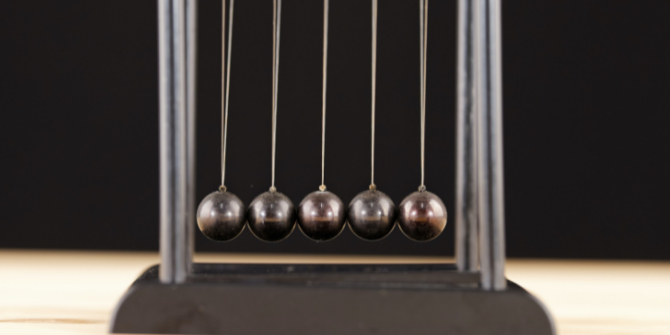



 Recent years have seen growing hostility between those who support different political parties in America. But what is the media’s role in creating this increasing dislike? In new research, Richard Lau, David Andersen, Tessa Ditonto, Mona Kleinberg and David Redlawsk investigate this “affective polarization” by exposing participants to different news sources and positive and negative political advertising. They find that hostility towards the opposite party is at its highest when conservative subjects are exposed to negative ads and can customize their news environment.
Recent years have seen growing hostility between those who support different political parties in America. But what is the media’s role in creating this increasing dislike? In new research, Richard Lau, David Andersen, Tessa Ditonto, Mona Kleinberg and David Redlawsk investigate this “affective polarization” by exposing participants to different news sources and positive and negative political advertising. They find that hostility towards the opposite party is at its highest when conservative subjects are exposed to negative ads and can customize their news environment.
After the 2016 US presidential election, Facebook and Google were blamed for their contribution to the curated media bubbles that voters in America inhabit. Media bubbles are, of course, one-sided information environments that not only keep people in the dark about ideologically incongruent thought, but also have the potential to make them very angry about the ideas of the other side. Feeling hostile towards members of the opposing party —affective polarization—is a well-documented and increasingly common phenomenon. More and more partisans view members of the rival party as a disliked out-group and are displaying signs of inter-group hostility toward them. But, does the internet, with its broad and often ideologically extreme media sources, really contribute to the increasing dislike between Democrats and Republicans? And, if so, are there other factors that contribute to affective polarization? For example, does the tone of the political ads voters see affect what kind of information they engage with and how much they subsequently dislike members of the opposing party?
Our new research tackles these questions and provides causal evidence showing that ideologically diverse media environments increase affective polarization. Our experiment, fielded during the last month of the 2012 presidential election, demonstrates that hostility towards the opposing party is greatest among conservative subjects who see negative ads and can customize their news environment along ideological lines.
We investigated affective polarization in two ways. First, we manipulated the availability of ideologically charged news: Participants in a high-choice condition (labeled “diverse” in the figures) could look at mainstream or ideologically extreme information (e.g., from Fox News, MSNBC). Subjects in the mainstream condition only had access to moderate mainstream news sources (CBS News, USA Today). (The number of articles was the same in the high-choice and mainstream news conditions.) A third group did not have access to any extra information. Second, we varied the tone (positive or negative) of the political ads that subjects viewed.
We expected those in the high-choice condition to examine more news articles about Romney and Obama, seek more information about a specific candidate, and like one more candidate than the other, and that these behaviors would be heightened when they were exposed to negative ads. We also predicted that these effects would be stronger among conservatives, given that there are suggestions in the literature that Republicans and conservatives are particularly trusting of conservative media – and are very distrusting of liberal media.
The inclusion of political ads is important because our experiment approximated the modern information environment very well. Ads are almost unavoidable during election season. They are placed online (e.g. on YouTube to play before individuals can watch their desired content) and are seen on TV in battleground states. Note that in this experiment, as in the real world, the selection of news articles subjects read about Romney and Obama was discretionary. Seeing ads, however, was not optional.
What we found
Information Search: We find that neither having access to ideologically extreme media sources, nor viewing negative ads, increases the number of articles about the candidates examined, but that there is a significant interaction between the ideologically diverse media condition and the negative ads condition in increasing information search. The most interesting finding, however, is the three-way interaction pictured below:
Figure 1 – Effect of media environment, Ad Tone, and candidate preference on information search

As Figure 1 shows, it is primarily Republicans in the high-choice media environment, whose information search is conditioned by the negative tone of the political advertising they see.
Selective Exposure: We defined “selective exposure,” as the difference between the number of articles examined about the preferred candidate minus the number of articles examined about his opponent. Thus, positive numbers reflect motivated reasoning, seeking out more information about the preferred candidate. Overall, subjects did not engage in selective exposure – except those who were partial to the Republican candidate and who were in the high-choice, negative ads condition, as Figure 2 shows.
Figure 2 – Effect of media environment, ad tone, and candidate preference on selective exposure

Affective polarization: This variable was based on the 100-point feeling thermometer evaluations of Barack Obama and Mitt Romney, where polarization is defined as the absolute value of the difference between the ratings of the two presidential candidates.
As shown in Figure 3, among subjects in the control and mainstream news conditions, affective polarization was about seven and three points greater in the positive ad condition (compared to the negative condition), respectively. It appears that most voters in these conditions largely rejected the attacks from either candidate in the negative ad conditions.
Figure 3 – Effect of media environment and Ad Tone on affective polarization

In the high-choice media condition that featured ideologically extreme news and where subjects had the ability to easily check out the claims made in the attack ads, and had leeway to shape the answers they got, polarization was noticeably greater in the negative ad condition compared to the positive ad condition—about 15 points greater. Being exposed to more ideologically extreme, negative news from a variety of sources makes conservatives more likely to dislike Democratic candidates.
Our findings show that it is not just the ideological diversity of media outlets, but the interaction between that diversity and exposure to negative campaign ads, that is the driving force behind feelings of hostility towards the opposing party. This is an important contribution to the study of affective polarization; while we have observed both an increase in affective polarization and media choice over the past 20-30 years, researchers have not yet been able to show a causal relationship between the two phenomena.
This article is based on the paper, “Effect of Media Environment Diversity and Advertising Tone on Information Search, Selective Exposure, and Affective Polarization” in Political Behavior.
Featured image: “Television“ by Sven Scheuermeier from Unsplash
Please read our comments policy before commenting.
Note: This article gives the views of the author, and not the position of USAPP – American Politics and Policy, nor of the London School of Economics.
Shortened URL for this post: http://bit.ly/2nFHcqo
_________________________________
 Richard Lau – Rutgers University
Richard Lau – Rutgers University
Richard R. Lau is Professor of Political Science at Rutgers University in New Brunswick, New Jersey. His chief research interests include political cognition and political decision-making; media effects in political campaigns; the effects of metaphors in public opinion and political persuasion; institutional means for improving democratic representation; the role of self-interest in political attitudes and behavior; and health policy.
 David Andersen – Iowa State University
David Andersen – Iowa State University
David Andersen is an Assistant Professor at Iowa State University. His specific interests are in studying how voters learn about, evaluate and choose to support political candidates.
 Tessa Ditonto – Iowa State University
Tessa Ditonto – Iowa State University
Tessa Ditonto is an assistant professor in the Department of Political Science at Iowa State University. Ditonto’s research is broadly centered in women and politics, political behavior and political psychology and focuses on how voters learn about political candidates and make decisions during political campaigns.
 Mona Kleinberg – UMass Lowell
Mona Kleinberg – UMass Lowell
Mona Kleinberg is an Assistant Professor at UMass Lowell. She focuses on how the new media environment (the Internet) affects democratic politics. She also examines the role of race and gender in American politics and has a significant interest in survey and experimental research.
 David Redlawsk – University of Delaware
David Redlawsk – University of Delaware
David P. Redlawsk is James R. Soles Professor of Political Science and Chair of the Department of Political Science and International Relations at the University of Delaware and author of ‘Why Iowa?’



